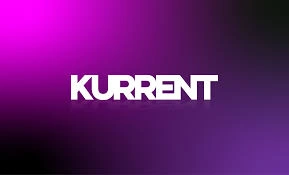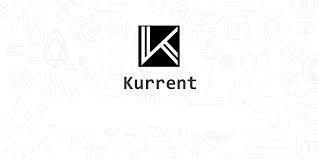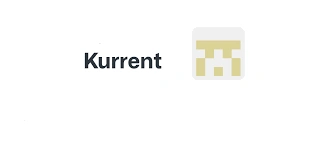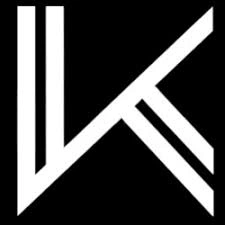Kurrent (KURT): Secure, Private, and Profitable Crypto for Miners
Table of Contents

Kurrent is a Mineable Token. Are you curious about expanding your crypto portfolio with other mineable tokens or alternative coins? At Niftyfinances, you’ll find in-depth information, guides, and the latest updates on various promising crypto projects. Whether you’re a miner or an enthusiast looking for unique opportunities, Niftyfinances is your go-to platform to discover what’s next in decentralized finance!
Privacy and profitability—two of the biggest concerns in the crypto world. Kurrent (KURT) is designed to offer secure, anonymous transactions while remaining a viable option for miners and investors. Whether you’re looking to mine KURT or trade it, understanding its features is essential. Let’s explore everything about Kurrent!

What Is Kurrent (KURT)?
Kurrent (KURT) is a privacy-focused cryptocurrency designed to offer users complete anonymity in financial transactions. Unlike traditional cryptocurrencies like Bitcoin, which have transparent public ledgers, Kurrent ensures that transaction histories remain untraceable. By implementing the Zerocoin Protocol, KURT allows users to make confidential transactions without revealing their identities, making it a viable option for those who prioritize financial privacy.
Kurrent was launched to address privacy concerns in the crypto space, where many existing digital assets fail to provide full transaction anonymity. With growing surveillance in financial systems and concerns about data privacy, Kurrent positions itself as a cryptocurrency that empowers users with untraceable and secure transactions.
Technology Behind KURT’s Anonymity Features
One of Kurrent’s main privacy features is the Zerocoin Protocol, which is designed to enhance the anonymity of transactions by breaking the link between sender and receiver. This protocol converts regular KURT tokens into special anonymous tokens (known as “Zerocoins”), which can then be spent without any traceable transaction history.
Here’s how the Zerocoin Protocol works in Kurrent:
- Minting Zerocoins: When a user wants to make an anonymous transaction, they exchange their standard KURT coins for Zerocoins. These Zerocoins do not retain any information about the sender’s original wallet address.
- Destroying Transaction Links: Since these Zerocoins are newly generated tokens, there is no way to trace them back to the original sender. This eliminates any link between the previous owner and the new owner.
- Spending Anonymously: When the user spends Zerocoins, the network verifies the transaction without revealing the sender’s identity. The coins are then converted back into regular KURT, but they remain unlinked to their source.
Because of this process, Kurrent offers users complete financial privacy, making it impossible for blockchain analysts to track transactions. This sets it apart from standard cryptocurrencies like Bitcoin, where transaction details are permanently recorded on the blockchain and can be traced back to individuals.
Comparison with Other Privacy Coins
While Kurrent shares the common goal of privacy with cryptocurrencies like Monero and Zcash, it differentiates itself through its unique implementation:
- Monero: Monero employs ring signatures, stealth addresses, and confidential transactions to ensure all transactions are private by default. Its blockchain is designed to be opaque, concealing transaction details to enhance anonymity.
- Zcash: Zcash offers users the choice between transparent and shielded transactions. It utilizes zk-SNARKs (zero-knowledge succinct non-interactive arguments of knowledge) to enable fully private transactions, allowing users to selectively disclose information as needed.
- Kurrent: In contrast, Kurrent’s use of the Zerocoin Protocol focuses on converting standard KURT units into anonymous tokens, which can be transferred and redeemed without linking to the original transaction, thereby maintaining user privacy.
Kurrent (KURT) is a powerful privacy-focused cryptocurrency that leverages the Zerocoin Protocol to ensure user anonymity. Unlike Bitcoin, which records all transactions on a transparent ledger, Kurrent allows users to make transactions that cannot be traced back to them. While it offers a strong privacy solution, it competes with well-established privacy coins like Monero (XMR) and Zcash (ZEC), both of which use different mechanisms to achieve anonymity.

How Kurrent (KURT) Works
Kurrent (KURT) is a privacy-focused cryptocurrency that ensures secure and anonymous transactions using blockchain technology. It distinguishes itself from traditional cryptocurrencies like Bitcoin by prioritizing user anonymity and transaction confidentiality. Below, we’ll explore Kurrent’s blockchain infrastructure, security measures, transaction speed, scalability, and powerful privacy mechanisms.
Blockchain Technology and Security Features
Kurrent operates on a decentralized blockchain, meaning no central authority controls the network. Like other cryptocurrencies, it relies on a distributed ledger to record transactions securely and prevent fraud. However, Kurrent goes a step further by integrating advanced privacy features that make transaction tracing nearly impossible.
Key Security Features of Kurrent:
- Zerocoin Protocol: Kurrent uses the Zerocoin Protocol to ensure transaction anonymity, making it difficult for third parties to track transactions.
- Decentralized Ledger: Transactions are validated by nodes across the network, preventing censorship and ensuring that the blockchain remains tamper-proof.
- Proof-of-Work (PoW) Consensus: Kurrent utilizes a PoW consensus mechanism, requiring miners to solve complex cryptographic puzzles to validate transactions and secure the network.
- Double-Spending Prevention: Like Bitcoin, Kurrent prevents double-spending attacks by verifying each transaction’s legitimacy through blockchain confirmations.
By leveraging these security features, Kurrent maintains a reliable and resilient blockchain infrastructure that prioritizes user privacy without compromising security.
Transaction Speed and Scalability
One of the biggest challenges facing privacy-focused cryptocurrencies is maintaining a balance between anonymity and network efficiency. Kurrent has optimized its blockchain to offer faster transaction processing while still preserving user privacy.
Transaction Speed:
- Kurrent transactions are designed to be lightweight and efficient, with a block time that enables quick confirmations.
- The Zerocoin Protocol, while enhancing privacy, adds some computational complexity, but Kurrent’s developers have worked to streamline the process for improved performance.
Scalability Solutions:
- Efficient Block Validation: Kurrent’s blockchain is designed to handle an increasing number of transactions without significantly slowing down network performance.
- Optimized Zerocoin Minting and Spending: The Zerocoin Protocol has been improved to reduce the computational burden when anonymizing transactions.
- Potential Future Upgrades: As the crypto landscape evolves, Kurrent may explore Layer-2 solutions or other scalability enhancements to handle more transactions per second.
Although privacy features typically introduce additional processing requirements, Kurrent ensures that users experience relatively fast transactions without major delays.
How Kurrent Ensures Anonymity
1. The Zerocoin Protocol: Kurrent’s Core Privacy Feature
Kurrent’s primary privacy mechanism is the Zerocoin Protocol, originally developed as a way to enhance Bitcoin’s anonymity. The protocol enables users to convert standard KURT tokens into completely untraceable Zerocoins, which can later be redeemed as new KURT units with no link to the original transaction.
How Zerocoin Works in Kurrent:
- Minting Privacy Coins: A user can take standard KURT coins and “mint” them into Zerocoins, removing any link to their transaction history.
- Transferring Zerocoins: Once minted, these anonymous coins can be sent to another user without revealing any sender or recipient information.
- Redeeming Zerocoins: The recipient can then redeem the Zerocoins for new KURT tokens, which appear on the blockchain as freshly generated coins with no traceable past.
This process effectively breaks the transaction trail, ensuring that no one can link a sender’s address to a recipient’s address.
2. Zero-Knowledge Proofs for Transaction Privacy
Kurrent also employs zero-knowledge proofs (ZKPs), which allow users to prove the validity of a transaction without disclosing any details about the transaction itself.
In simple terms, zero-knowledge proofs work as follows:
- The sender can prove they have valid funds without revealing their wallet balance or previous transactions.
- The recipient and the network confirm the transaction’s authenticity without knowing the sender’s identity.
This method ensures that transactions remain secure, verifiable, and private, even when processed on a public blockchain.
3. Enhanced Fungibility: Preventing Coin Traceability
In traditional cryptocurrencies like Bitcoin, coins can be “tainted” by their transaction history, meaning certain funds may be linked to illicit activity. Kurrent solves this problem by ensuring complete fungibility, meaning all KURT coins are identical and interchangeable.
Since Zerocoins are minted as brand-new tokens every time they are used, there is no way to track or blacklist any specific coins based on past transactions.

Mining Kurrent (KURT)
Mining is an essential process in many blockchain networks, allowing users to validate transactions and secure the network while earning rewards. Kurrent (KURT), a privacy-focused cryptocurrency, initially supported mining through a Proof-of-Work (PoW) consensus mechanism. This guide will cover KURT’s mining algorithm, the recommended hardware and software, steps to set up a mining rig, and an analysis of mining profitability.
Mining Algorithm Used in KURT
Kurrent (KURT) was initially designed to be mined using the X11 hashing algorithm, a well-known mining algorithm that uses a series of 11 cryptographic functions in a single chain.
Key Features of X11 Mining in Kurrent:
- Efficient Power Usage: X11 is more energy-efficient than older PoW algorithms like SHA-256 (Bitcoin’s algorithm).
- ASIC-Resistant (Initially): X11 was initially designed to be ASIC-resistant, but over time, specialized ASIC miners were developed, making it harder for GPU miners to compete.
- Improved Security: By chaining multiple cryptographic functions together, X11 provides additional security against certain types of attacks.
Although X11 was initially friendly to CPU and GPU miners, the emergence of X11 ASIC miners has made mining more competitive, meaning solo mining with regular hardware is no longer profitable.
Recommended Mining Hardware and Software for KURT
1. Mining Hardware
To mine Kurrent efficiently, you will need the right mining hardware. The best option depends on the network’s mining difficulty and competition.
Hardware Options:
- ASIC Miners (Recommended for Profitability):
- Bitmain Antminer D3 – One of the most powerful X11 ASIC miners.
- iBeLink DM22G – High efficiency, but consumes significant power.
- Baikal Giant X10 – Can mine multiple algorithms, including X11.
- GPU Mining (Not Recommended for Profitability):
- NVIDIA GeForce GTX 1080 Ti – Capable but unprofitable due to ASIC dominance.
- AMD Radeon RX 5700 XT – Good efficiency but struggles against ASICs.
- CPU Mining (Not Practical):
- Due to the existence of ASICs, CPU mining for Kurrent is highly inefficient.
2. Mining Software
Choosing the right mining software is crucial for maximizing efficiency and stability. Here are the best options for X11 mining:
- CGMiner – One of the oldest and most reliable command-line miners for X11.
- BFGMiner – Another advanced mining software with extensive configuration options.
- EasyMiner – A user-friendly option, ideal for beginners.
- Awesome Miner – Useful for managing multiple miners in a mining farm.
For ASIC miners, the manufacturer often provides built-in mining software, and setting up is usually straightforward.
How to Set Up a Profitable KURT Mining
Step 1: Choose Your Mining Hardware
- If you are serious about mining KURT, invest in an X11 ASIC miner.
- If you already have high-end GPUs, you can test mining but expect lower rewards.
Step 2: Select a Mining Pool
Since solo mining is no longer feasible, joining a mining pool is necessary to improve reward consistency. Some X11 mining pools that previously supported Kurrent include:
- Mining-Dutch
- zpool.ca
- NiceHash (X11 mining but auto-converts rewards)
Check pool availability before starting, as some pools may no longer support Kurrent mining.
Step 3: Download and Configure Mining Software
- Install a mining program such as CGMiner or Awesome Miner.
- Connect to a mining pool by adding your wallet address and pool settings in the software.
- Configure performance settings to optimize hash rate and energy consumption.
Step 4: Monitor Performance and Adjust Settings
- Use monitoring tools to track hash rates, power consumption, and pool rewards.
- Adjust fan speeds and overclock settings to improve efficiency while preventing overheating.
Step 5: Withdraw and Secure Your KURT Rewards
- Once you accumulate enough KURT, withdraw it to a secure wallet.
- Consider using cold storage for long-term holdings.
Mining Profitability
Block Rewards and Halving Events
- Initially, Kurrent’s block reward was 1 KURT per block, with periodic adjustments based on mining difficulty.
- Block rewards were reduced over time as part of the network’s supply schedule.
- Halving events lowers the block reward, making mining less profitable as supply tightens.
Mining Difficulty and Network Hash Rate
- Mining difficulty adjusts based on network competition, affecting how easily miners can solve blocks.
- If more ASIC miners enter the network, the difficulty rises, reducing profitability for individual miners.
Electricity Costs and Profit Margins
- Electricity consumption is the biggest factor in mining profitability.
- Using an ASIC miner with a low electricity cost per kilowatt-hour (kWh) is crucial for maximizing earnings.
- Always calculate cost vs. reward before committing to mining Kurrent.
How to Buy and Store Kurrent (KURT) Safely
Kurrent (KURT) is a privacy-focused cryptocurrency that aims to provide anonymous transactions. If you are looking to acquire KURT and store it securely, you need to follow a structured approach to purchasing, transferring, and securing your holdings. This guide will cover the exchanges where you can buy KURT, the best wallet options for secure storage, and key security practices to protect your investment.
Exchanges Where You Can Buy KURT
Before purchasing Kurrent, it’s important to check if it is still actively traded. Since KURT is a lesser-known cryptocurrency, its availability on major exchanges may be limited.
1. Exchanges That Previously Supported KURT
In the past, Kurrent was listed on smaller cryptocurrency exchanges that focused on privacy coins and alternative cryptocurrencies. Some of these included:
- Cryptopia (Defunct) – A popular exchange for altcoins before shutting down.
- YoBit – Known for listing a variety of lesser-known cryptocurrencies.
- Trade Satoshi (Defunct) – A small exchange that was closed.
Since some of these platforms no longer exist, you will need to check for KURT’s availability on current active exchanges that support privacy coins.
2. Peer-to-Peer (P2P) Trading
If KURT is no longer available on centralized exchanges, you might need to explore P2P trading options through:
- Crypto forums and Reddit communities – Some holders may be willing to sell KURT privately.
- Telegram and Discord groups – Cryptocurrency communities often facilitate over-the-counter (OTC) trades.
- Decentralized exchanges (DEXs) – If KURT is supported on a DEX, you can swap other cryptocurrencies for KURT without using a centralized exchange.
Best Wallet Options for Securely Storing KURT
Once you have acquired Kurhttps://github.com/kurrentproject/Kurrent/blob/master/README.mdrent (KURT), the next step is to store it securely. Choosing the right wallet is essential for protecting your funds from potential threats.
1. Official Kurrent Wallet
- The Kurrent Core Wallet was originally developed as the official wallet for KURT.
- It allows users to store, send, and receive KURT securely while maintaining control over their private keys.
- However, you must check if the wallet is still actively maintained and updated to avoid security vulnerabilities.
2. Desktop and Mobile Wallets
- Electrum-based wallets – If Kurrent supports Electrum, it may offer a lightweight and fast wallet option.
- Trust Wallet / Atomic Wallet – Popular multi-asset wallets that could support KURT if it runs on a standard blockchain (e.g., ERC-20 or BEP-20).
- Mobile wallets (Android/iOS) – If an official or third-party KURT wallet exists, ensure it is downloaded from the official website or a verified app store.
3. Hardware Wallets (Best for Long-Term Storage)
For maximum security, hardware wallets such as Ledger Nano S/X or Trezor offer cold storage, which keeps your private keys offline, making them nearly immune to hacks. However, KURT must be supported by the hardware wallet provider for this to be a viable option.
4. Paper Wallets (Cold Storage Alternative)
If you plan to hold KURT long-term, you can generate a paper wallet, which includes:
- A printed copy of your public and private keys
- Offline storage to prevent hacking attempts
Kurrent (KURT) offers a strong combination of privacy, security, and mining profitability. Understanding KURT’s features can help you make the most of this digital asset. Are you ready to explore the future of private transactions?